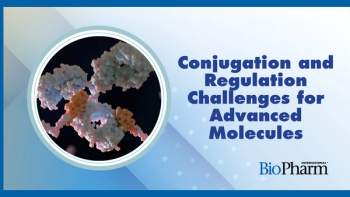
- BioPharm International, January 2022
- Volume 35
- Issue 1
Qualifying AI Algorithms in Pharmaceutical Manufacturing
Qualified algorithms enable validation of machine learning models that can be used for process optimization.
Artificial intelligence (AI) and machine learning (ML) are transforming industries as diverse as retail and energy, using powerful algorithms and rich data analytics to improve business agility in a constantly changing, global marketplace. But some highly-regulated industries—such as pharmaceutical manufacturing and life sciences—are missing out by not fully using AI and ML. While there is currently no specific guidance describing how AI must be used, it is generally accepted that AI algorithms fall into the same bucket of regulation as multivariate tools as an analytical math system. FDA and the European Pharmacopoeia have clearly indicated their support of AI as a tool to increase quality and efficiency and have published some content backing this technology. For example, the ninth edition of the European Pharmacopoeia published in 2017 announced two AI algorithms as valid chemometric methods in chapter 5.21 (1). In 2021, FDA published an action plan regarding the use of AI and ML as software for medical devices (2). Additionally, the Process Validation guidance published by FDA in 2011 described standard methods to calculate the validity of any analytic model (including AI as a multivariate tool) (3).
Another roadblock to AI adoption is the perception that machine learning models are developed in a black box. These models rely on AI algorithms and their unique capacity of self-tuning themselves by learning from data; different data mean different tuning needs. Therefore, qualification of the AI algorithm is a prerequisite before a machine learning model can even be validated. Only explainable and reproducible multivariate mechanisms can be used for good practice (GxP) purposes; AI must be managed in this way to open the perceived black box.
There are some industry initiatives to help overcome this hurdle. For example, Xavier University has several AI working teams that have been working with industry leaders in coordination with FDA to develop Good Machine Learning Practices (GMLP), an AI Maturity Model, show real-use cases, and drive other initiatives related to AI implementation. The Parenteral Drug Association has also published an AI Algorithm Qualification study (4). The goal of this research initiative was to provide a methodology based on a design of experiment (DoE) approach to agnostically qualify the Isolation Forest algorithm. This strategy can be applied to real datasets containing different sources of variability or using synthetic datasets containing several variables with different controlled features that are the object of study, such as correlated variables, various standard deviations, orders of magnitude, etc. An experimental engine was specifically built as part of the project. The strategy was focused on detecting defects in a motor using an AI algorithm for outlier detection. The experiments carried out have been defined using a DoE to cover all operational conditions. The resulting guidelines can be applied to other AI algorithms for regulated drug and medical device manufacturing environments.
Following this blueprint, pharmaceutical and biotech companies can use AI/ML to optimize their highly regulated manufacturing processes. The use of batch data to streamline production, reduce costs, improve yield, and keep up with today’s increasingly complex regulatory landscape will enable Pharma 4.0 and the business transformation benefits that come with it.
Qualification method
AI/ML allows pharmaceutical manufacturers and life sciences companies to interrogate, analyze, and manage huge data sets generated by complex systems. Using qualified AI production chain algorithms provides new ways to scale operations and production. A qualified algorithm presumes a ready-to-use state, making the model validation process easier.
The concept of qualification is associated with systems, facilities, or equipment and is a process to ensure that these things are achieving the expected acceptance criteria defined in quality attributes and parameters. In a regulatory context, “qualification” is the status of quality assurance for systems, facilities, or equipment supported by documented evidence that proves the right use of them. Qualification is different from validation. “Validation” is the documented evidence to ensure that a specific system, process, or facility is generating an output with predefined quality attributes and specifications consistently (3). In summary, validation acts over processes and procedures while qualification affects assets. Generalization is possible for qualification, but not for validation. Usually, the validation of a system or equipment implies its previous qualification. Following this reasoning, the validity of AI applications should be studied by means of the algorithm qualification perspective, proposing a set of standard procedures to establish the acceptance criteria of its implementation based on a set of expected conditions (4).
Now, it’s up to the industry to leverage and optimize this capability. The following are four key points to consider when abstracting this generalized qualification method to qualify other AI algorithms.
AI is only as good as the data you feed into it
AI systems designed to interpret multivariable scenarios subject to safety, quality, and efficacy regulatory requirements must be trained with high quality data. Data must be prepared, including the sufficient variety of use cases to cover process experts, regulators, and patient expectations. If data does not properly cover all the potential scenarios, an incomplete AI model will be generated that is unable to provide the expected accuracy. Conversely, when data contain all the potential situations, the model will present robust outputs.
Innovation is just beginning
Global regulatory bodies are increasingly evaluating the benefits of AI as related to pharmaceutical environment processes. In 2019, FDA published a discussion paper to request feedback regarding AI/ML usage for medical devices (5). The European Medicines Agency (EMA) and Heads of Medicines Agencies (HMA) expanded the scope of the Joint Big Data Task Force to include AI, reflected in the Big Data Steering Group Plan. They published a report in 2020 on
AI will improve response to future pandemics and health threats
Research and development are only part of the equation for discovering and developing new therapies, such as the COVID-19 vaccines. Manufacturing and the ability to scale up production and delivery of these life-saving products was key. AI and ML have already helped manufacturers increase yield, identify issues before they occur, and speed the identification of root causes of deviations. These examples demonstrate how AI accelerates current operations by means of a multivariate approach. While speed is critical, all tools, including AI/ML, must be appropriately vetted and proven.
It’s time to accelerate Pharma 4.0
The promise of Pharma 4.0 has never been greater. Powered by qualified AI/ML, pharmaceutical and life sciences companies will be able to fully digitize their manufacturing processes through data-driven decision-making. The smart factory, robotic manufacturing, and the Industrial Internet of Things, for example, will graduate from concepts on a white board to fully realized business tools. Most importantly, these companies will be able to unleash the power of their data to optimize the manufacturing process, improve yield, and guarantee product consistency and quality.
Opening the door to new innovations and efficiencies
The ability to apply AI governance to other algorithms in highly regulated drug and medical device manufacturing environments opens the door for all sorts of innovation. Companies will be able to take advantage of AI/ML to find new ways to scale operations and production while ensuring the quality of delivered therapeutic and medical device products and services. This ability will result in an economy of scale that leads to safer, more efficient, and effective patient outcomes; make us more resilient in the face of future health threats; and open the door to finally realizing the promise of a fully digitalized Pharma 4.0.
References
- EDQM, EurPh, General Text 5.21 (EDQM, Strasbourg, France, 2017)
- FDA,
Artificial Intelligence/Machine Learning (AI/ML)-Based Software as a Medical Device (SaMD) Action Plan , (January 2021). - FDA, Guidance for Industry, Process Validation: General Principles and Practices (Rockville, MD, January 2011).
- T. Manzano et al., J. Pharm. Sci. Tech. online DOI:10.5731/pdajpst.2019.011338 (August 2020).
- FDA, Proposed Regulatory Framework for Modifications to Artificial Intelligence/Machine Learning (AI/ML)-Based Software as a Medical Device (SaMD): Discussion Paper and Request for Feedback (April 2019).
- EMA, HMA-EMA Joint Big Data Taskforce Phase II report: Evolving Data-Driven Regulation (March 2020).
About the author
Toni Manzano, toni.manzano@aizon.ai, is chief science officer and co-founder at Aizon.
Article Details
BioPharm International
Vol. 35, No. 1
January 2022
Pages: 30–31,37
Citation
When referring to this article, please cite it as T. Manzano, “Qualifying AI Algorithms in Pharmaceutical Manufacturing,” BioPharm International 35 (1) 30–31,37 (2022).
Articles in this issue
about 4 years ago
Industrious Pharmaceuticalsabout 4 years ago
The Long Path to Normalabout 4 years ago
What’s Next for COVID-19 Vaccines and Variants?about 4 years ago
Recent Trends in Data Analytics for Upstream Process Workflowsabout 4 years ago
Automating Upstream Processes Helps Sync Workflowsabout 4 years ago
Enhancing Resins Addresses Purification Concernsabout 4 years ago
Quality Still a Priorityabout 4 years ago
Finding Solutions to Cold Chain Supplyabout 4 years ago
Outsourcing’s Race Toward Noveltyabout 4 years ago
Multiple Challenges to Multispecific AnalysisNewsletter
Stay at the forefront of biopharmaceutical innovation—subscribe to BioPharm International for expert insights on drug development, manufacturing, compliance, and more.




